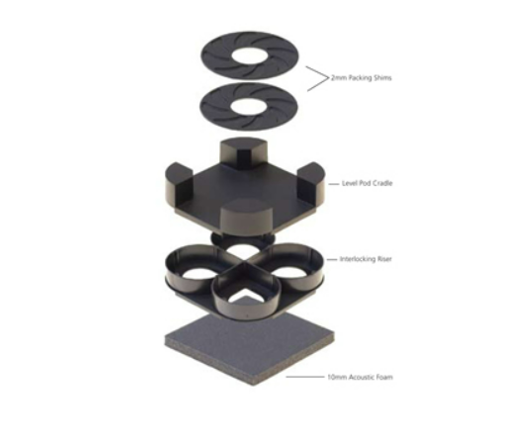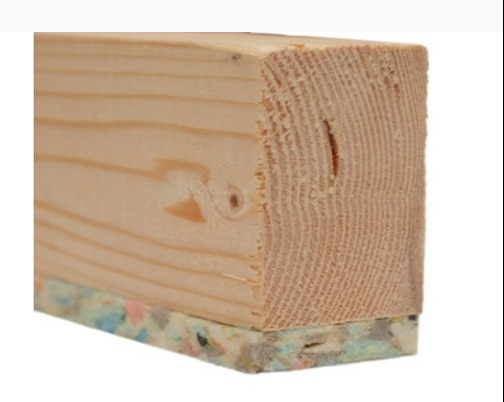30
Jan 2024
Is there such a thing as soundproof flooring?
If you are developing or retrofitting an existing building that has multiple floors, an important factor to consider is soundproof flooring.
Soundproof flooring can be built into the very fabric of the building and like waterproofing, fills in small gaps between the floors to stop sound from passing from one compartment to the next – something that can be bothersome for inhabitants.
So, which soundproof flooring is best for you?
Can soundproof flooring block all types of sound pollution?
In this instance, the most relevant types of sound are impact and airborne.
Impact sounds occur when one item or material hits another, causing vibrations. For example, when people walk or drag furniture across the floor.
As these vibrations pass through walls and floors, they make the structures themselves vibrate, meaning that the sound itself remains strong and will slowly reduce in volume or strength. As such, impact sound will often be heard by neighbours if soundproofing is not used.
Airborne sounds, on the other hand, are transmitted as the vibrations pass through the air, and include examples such as shouting, loud TV noise, and dogs barking.
When the sound waves travel through the air, they meet building elements, such as walls and floors, and the waves are radiated through at a reduced volume. This means that while airborne sounds are muffled by built elements, some sounds may still be heard by neighbours unless you use soundproofing.

Types of soundproof flooring
To limit the spread of impact and airborne sound, there are a range of acoustic flooring options you can consider.
Each has a range of possible applications and is installed in different ways, meaning that to find the most appropriate soundproof flooring you may need to do a little research beforehand.
Cellecta Screedboard 20 or 28
With a choice of 20mm or 28mm thicknesses, Cellecta Screedboard is a single-layer solution for timber frame buildings.
Simple to install and offering lower finished flooring heights, Cellecta Screedboard offers a range of benefits, including:
- Meets both Robust Details and Building Regulations
- Can be used alongside underfloor heating, floating floors, and pre-existing timber floor joists
- Suitable for use with timber, steel, and concrete floors (Cellecta 20) or timber and concrete floors (Cellecta 28)
- Excellent impact and airborne performance
- Can be topped with a range of finished flooring, including carpet, tiles, laminate, and vinyl – and Cellecta Screedboard 28 doesn’t need the use of overlay, saving you time and money!
- Made from 100% recycled materials
- Won House Builder Product of the Year Award 2014 (Cellecta 28)

Acoustic decks
Designed to be used alongside timber and concrete floors, acoustic decks reduce sound transmission in new build or retrofitting projects.
Acoustic decks come in a range of thicknesses, ranging from Knauf Brio 18WF to JCW Acoustic Deck 28, and are most often constructed from an MDF or chipboard layer with a pre-bonded resilient foam layer.
Other benefits include:
- Compliance with Robust Details FFT-5
- Exceeding requirements of Part E of the Building Regulations
- Minimal impact on finished floor height
- Excellent impact sound performance
- Can be used with underfloor heating (Knauf Brio 18 and 23)
Acoustic cradles
These acoustic cradles level out very uneven floors in new build and refurbishment projects while also increasing the acoustic protection of each room.
These cradles are suitable for timber and concrete subfloors with a subfloor height that varies between 55mm and 300mm. Other benefits include:
- Exceeds Part E of the Building Regulations
- Meets Robust Details
- Easy to use and quick to install
- Designed for projects with cambered, stepped, and uneven subfloors
- Improved resistance to impact and airborne sound
- Made from recycled materials
Acoustic battens
Suitable for concrete and timber subfloors, acoustic battens meet both Robust Details and Building Regulations.
The thickness and the subfloor is denoted by a number (in mm) and either a T (timber) or a C (concrete).
The range includes:
- 80C battens
- 80T battens
- 50C battens
- Please note, custom batten sizes are available upon request
Benefits include:
- Suitable for both new build and retrofitting projects
- Exceptional reduction in impact sound
- Has a high compressive strength
- Services can be installed between the battens
- Can be used alongside finished floors such as carpet and wooden floors
- Assumed use includes thermal insulation
Find the right soundproofed flooring with JCW Acoustic Flooring
The experts at JCW Acoustic Flooring install more than 100,000m² of acoustic flooring per year, delivering a reduction in impact and airborne sounds right across the country – from John O’Groats to Lands End and everywhere in between.
For more advice or technical information on a particular acoustic flooring option, why not contact the team today? You can call us on 01204 548 400 or email us at enquiries@jcwgroup.co.uk and we’ll get back to you as soon as we can.

